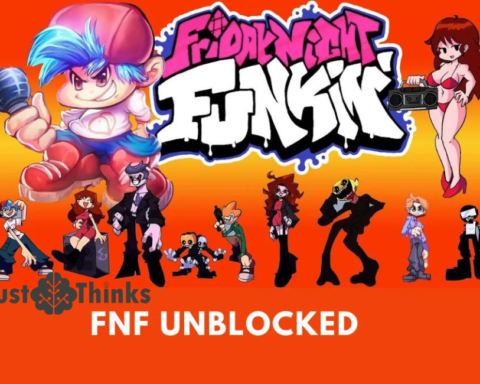Introduction
Comic books, once dismissed as mere entertainment for children, have evolved into a powerful educational tool. In recent years, educators and researchers have recognized the unique potential of comic books and graphic novels to engage students, foster critical thinking, and enhance literacy skills. Comic book resources, including websites, databases, and educational materials, have played a significant role in promoting this newfound appreciation for the medium. This essay explores the educational value of comic book resources, delving into how they can be harnessed for learning and the benefits they offer to students of all ages.
I. The Evolution of Comic Books as Educational Tools
Comic books have come a long way since their inception in the early 20th century. Initially created for entertainment, comics have gradually evolved into a diverse and rich medium that covers a wide range of genres and themes. This evolution has been driven by both creators and readers, who have recognized the potential of comics to convey complex narratives and ideas.
A. Diverse Genres and Themes
Today’s comic books and graphic novels encompass a broad spectrum of genres and themes. While superheroes remain a prominent genre, comics also explore history, science fiction, fantasy, biography, social issues, and more. This diversity allows educators to find comic books that align with various curriculum topics and cater to students’ varied interests.
B. Visual Storytelling
One of the most significant advantages of comic books as educational tools is their reliance on visual storytelling. Combining text and images, comics engage both the verbal and visual cognitive processes, promoting a deeper understanding of content. Visual cues can help readers comprehend complex ideas, emotions, and sequences of events.
II. The Role of Comic Book Resources in Education
Comic book resources serve as invaluable assets in the realm of education. These resources offer a wealth of information, guidance, and materials that educators can use to integrate comics into their teaching strategies effectively.
A. Websites and Databases
- Comic Book Websites: Websites like Comic Book Resources (CBR), Comic Book Vine, and Comic Book Database (ComicBookDB) provide extensive databases of comic book information. These websites are treasure troves of knowledge, offering details about comic book series, characters, creators, story arcs, and more.
- Educational Materials: Many comic book websites also offer educational materials and resources designed specifically for teachers. These materials may include lesson plans, reading guides, and articles that demonstrate how to incorporate comics into the curriculum.
B. Price Guides and Collecting
- Price Guides: Price guides, such as The Overstreet Comic Book Price Guide, cater to collectors and can be valuable for teaching mathematics and economics concepts. Students can learn about market values, grading systems, and the principles of supply and demand through the lens of comic book collecting.
- Collector’s Guides: Collector’s guides provide valuable tips on grading, storage, preservation, and buying/selling comics. These guides can be used to teach students about the care and preservation of historical artifacts, as well as the principles of value assessment.
III. Benefits of Using Comic Book Resources in Education
Integrating comic book resources into education yields numerous benefits for students, educators, and the educational system as a whole. These advantages extend beyond traditional literacy and encompass critical thinking, visual literacy, and engagement.
A. Improving Literacy Skills
- Reading Comprehension: Reading comics requires students to interpret visual cues, dialogue, and narrative sequences, fostering reading comprehension skills.
- Vocabulary Development: Comics often introduce students to new vocabulary words and idiomatic expressions within context, enhancing their language skills.
- Reluctant Readers: Comics can be particularly effective in engaging reluctant readers and encouraging them to explore literature further.
B. Visual Literacy
- Interpretation of Visual Information: Comics teach students to interpret visual information, understand symbolism, and analyze artistic choices.
- Visual Storytelling: Understanding how images convey meaning prepares students to critically assess media, advertising, and visual narratives in the digital age.
C. Critical Thinking and Analysis
- Sequencing and Cause-and-Effect: Reading comics requires readers to understand the sequential nature of storytelling and identify cause-and-effect relationships.
- Complex Themes and Moral Dilemmas: Many comics explore complex themes and moral dilemmas, encouraging critical thinking and ethical discussions.
D. Engagement and Motivation
- Increased Interest in Reading: Comics often captivate students and motivate them to read more, potentially sparking a lifelong love of reading.
- Multimodal Learning: Comics engage multiple senses, making learning more interactive and enjoyable.
IV. Integrating Comic Book Resources into the Curriculum
To fully harness the educational potential of comic book resources, educators can integrate them into various subjects and educational levels. Here are examples of how comics can be incorporated into different areas of the curriculum:
A. Language Arts and Literature
- Graphic Novel Studies: Teachers can introduce graphic novels and comics as part of literature studies. Works like “Maus” by Art Spiegelman and “Persepolis” by Marjane Satrapi offer rich material for literary analysis.
- Creative Writing: Comics can inspire students to create their own graphic narratives, promoting creativity and storytelling skills.
B. History and Social Studies
- Historical Comics: Comics like “March” by John Lewis, Andrew Aydin, and Nate Powell can be used to teach history and civil rights movements.
- Biography Comics: Comics about historical figures like Albert Einstein, Amelia Earhart, or Nelson Mandela provide engaging biographical content.
C. Science and STEM Subjects
- Science Comics: Educational comics like the “Science Comics” series cover a wide range of scientific topics, from dinosaurs to the human body.
- Science Fiction Comics: Sci-fi comics explore futuristic concepts and can stimulate discussions about technology and ethics.
D. Social and Emotional Learning
- Graphic Memoirs: Comics like “Hey, Kiddo” by Jarrett J. Krosoczka address personal and emotional themes, making them suitable for discussions on resilience and empathy.
- Social Issues: Comics can be used to explore social issues such as racism, gender equality, and environmentalism, fostering discussions on societal challenges.
V. Addressing Common Concerns and Misconceptions
While the educational benefits of comic books and resources are well-documented, some concerns and misconceptions persist. It’s essential to address these issues to ensure a balanced perspective:
A. Superficial Reading: Critics sometimes argue that comics encourage superficial reading. However, comics can be used to promote deep reading and critical analysis when paired with appropriate teaching strategies.
B. Limited Vocabulary: Some worry that comics may limit vocabulary development. However, comics often introduce students to new words and idiomatic expressions within context.
C. Inappropriate Content: Concerns about age-appropriate content exist, but there are comics suitable for all age groups, including young readers.
VI. Conclusion
Comic book resources have emerged as valuable educational tools that engage students, foster critical thinking, and enhance literacy skills. The evolution of comic books from entertainment to educational aids has expanded their potential to cover diverse subjects and themes, making them suitable for integration into various areas of the curriculum. Educators and students alike can benefit from the rich world of learning within the panels of comic books and the educational resources that support their use. As we continue to explore the educational value of comics, we open up new avenues for creative and effective teaching and learning.






